SIXTEN IVARSSON
(1910 - 2001)
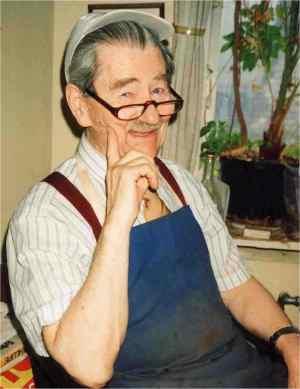
Sixten Ivarsson 1993
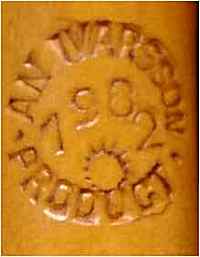
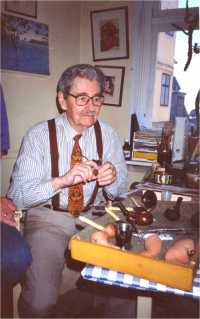
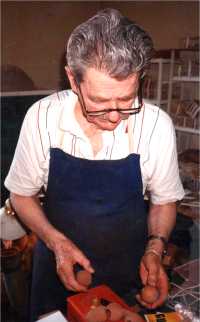
Sixten Ivarsson was born in the southern part of Sweden (Skane) in 1910. His father died when Sixten was only 8 years old. He went to Denmark in the middle of the 1930ies together with his wife, a Dane. In Copenhagen Sixten´s brother-in-law ran a small company for whom he worked as a bill executor for some years
During and after the 2nd World War it was impossible to get new pipes, why old pipes were often repaired. In the intention to have to repair a pipe, Ivarsson went to a pipe repair workshop (Suhrs). Because the craftsman was ill, Sixten executed the repair itself in a very good manner, much to the joy of the owner who offered Sixten a job as a repair-man immediately.
For some years he repaired countless numbers of pipes. Later, Sixten started to make own pipes on enquiry. The information spread quickly that new pipes were available at Suhr´s which were executed even in a new, interesting design.
What is special at the pipes of Sixten Ivarsson and why the pipes seem so familiarly to us today? Sixten drew up bowls of a pipe "free hand” and started to experiment with the grain, different staining procedures and finishes. The fact that the pipes were made “free hand” permitted him to turn the briar to get the most beautiful grain before carving the final shape. The shape of the pipe could as well be changed during the process if a flaw appeared in the wood. On the other hand, Sixten always accepted insignificant flaws in the wood. Leaving the nature bark on the rim of the bowl, the systematic use of horn or bamboo for shank extension also goes back to Sixten Ivarsson.
While we understand today the use bamboo or horn as additional decorating features, the introduction had actually thrift reasons, because briar was very rare and expensive. Later, the use of horn and bamboo were “signatures” of Sixten Ivarsson´s pipes together with very typical shapes of the bow (pewit-egg, Nefertiti and others). Sixten Ivarsson made pipes himself until 1993/94, partly with the assistance of son Lars and granddaughter Nanna. He died in spring 2001.
The pipes of Sixten are stamped: “An Ivarsson Product" (round stamp), inside the year, when the pipe was made and additional signs.
The price of the pipes of Sixten Ivarsson (Pipe Dan catalogue from 1961/62, shape “Pewitt” ) were 100.- to 150.- Danish Crowns (DKK) for sand-blasted pipes , smooth pipes were 150.- to 200.- DKK and Straight Grain costs 250.- tol 300.- DKK. Unusual shapes (Oliphant, Ukulele) costs 400.- DKK. The exchange rates amounted to 6.82 DKK for 1 U.S. $ 1 or 1.68 DKK for 1 German Mark at that time.
The pipes of Sixten Ivarsson are part of the most popular collectibles today at all. Sixten Ivarsson himself always saw his pipes as smoking instruments an so did his clients in the 1950ies or 1960ies. For that reason, there are only a few really well conditioned pieces just from the earlier years.
For additional
details: Danish Pipe History by Jakob Groth (DK)
Many thanks to Uli Wöhrle for the pictures of Sixten Ivarsson, made in his workshop
Any copying, publication
or reproduction of the papers and / or pictures published herein in printed
or electronic media is strictly prohibited without the explicit written
consent of these pages' owner.
(c) Pipendoge, 2009
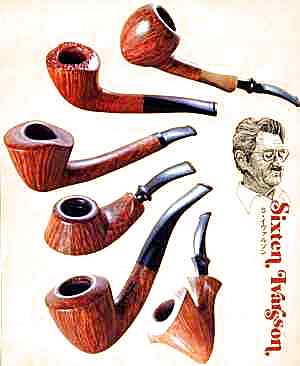

Pictures from an old Japanese pipe
book (1978) .
Thanks to Per Billhäll (SE) and Jakob Groth (DK)
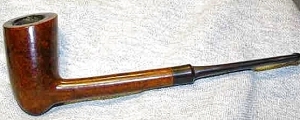
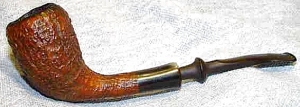

Drei sehr typische Pfeifen von
Sixten Ivarsson
Thanks to Per Billhäll (SE)